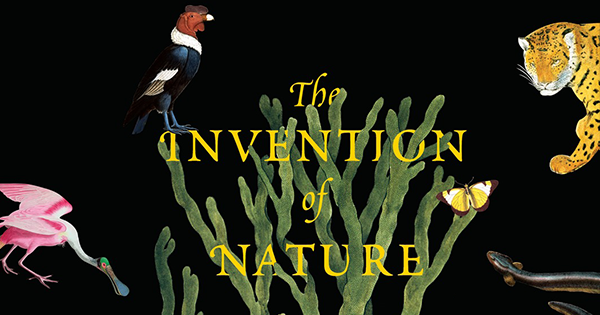The Invention of Nature
A brief excerpt from Andrea Wulf’s new book about Alexander von Humboldt

If Alexander von Humboldt had never written Personal Narrative or Views of Nature, Yosemite Valley and Sequoia National Park might have been parking lots, Darwin might never have boarded the H.M.S. Beagle, and Walden might have been a very different book. In 1869, the centennial of his birth, Humboldt was celebrated with parties on every continent except Antarctica and a bronze bust was unveiled in Central Park to the cheers of 25,000 people. How is it that a German naturalist has had such a profound impact on our understanding of the natural world, yet remains virtually unknown?
Andrea Wulf’s new biography, The Invention of Nature, fills the void with a doorstopper of a book encompassing Humboldt’s scientific excursions all over the world, his passionate anticolonialism, and his relationships with the leading luminaries of his day, including Goethe, Simón Bolivar, and Thomas Jefferson. It’s to Humboldt that we owe our very conception of nature and its “web of life,” which we can see in the almost 300 plants and more than 100 animals that bear his name. Perhaps this time next year, on Humboldt’s 247th birthday, we’ll be throwing a bigger party.
Views of Nature was a book written against the backdrop of Prussia’s desperate political situation and at a time when Humboldt felt miserable and stranded in Berlin. Transporting his readers into a magical world far from war and “the stormy waves of life,” Humboldt invited the reader to “follow me gladly into the thickets of the forest, into the immeasurable steppes, and out upon the spine of the Andes range … In the mountains is freedom!”
This new nature writing was so seductive, Goethe told Humboldt, “that I plunged with you into the wildest regions.” Similarly, another acquaintance, the French writer François-René de Chateaubriand thought the writing was so extraordinary that “you believe you are surfing the waves with him, losing yourself with him in the depths of the woods.” Views of Nature would inspire several generations of scientists and poets over the next decades. Henry David Thoreau read it, as did Ralph Waldo Emerson who declared that Humboldt had swept clean “this sky full of cobwebs.” And Charles Darwin would ask his brother to send a copy to Uruguay where he hoped to pick it up when the Beagle stopped there. Later, in the second half of the nineteenth century, science-fiction writer Jules Verne mined Humboldt’s descriptions of South America for his Voyages Extraordinaires series, often quoting verbatim for his dialogues. Verne’s The Mighty Orinoco was a homage to Humboldt and in his Captain Grant’s Children a French explorer insisted that there was no point in climbing Pico del Teide in Tenerife after Humboldt had already been up there: “What could I do,” Monsieur Paganel says, “after that great man?” It was no surprise that Verne’s Captain Nemo in his famous Twenty Thousand Leagues Under the Sea was described as owning the complete works of Humboldt.
Excerpted from The Invention of Nature by Andrea Wulf. Copyright © 2015 by Andrea Wulf. Excerpted by permission of Knopf, a division of Random House LLC. All rights reserved. No part of this excerpt may be reproduced or reprinted without permission in writing from the publisher.

